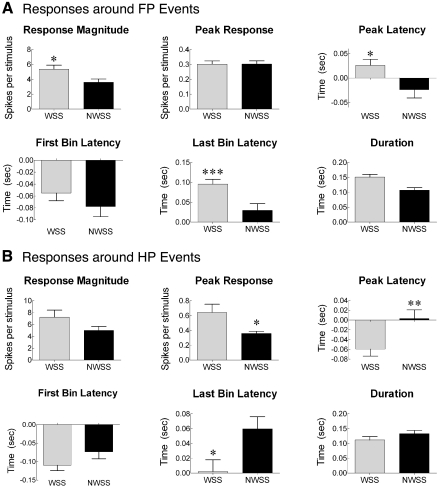Fig. 5.
The responsiveness of cells in the hindlimb SMC of neonatally spinalized rats was greater during weight-supported steps (WSS) than during nonweight-supported steps (NWSS). A: responsiveness measures derived from perievent histograms centered on forelimb paw (FP) placement (see methods). The number of spikes was greater when the animal took a weight-supported step compared with when the animal took a step that did not support the weight of its hindquarters. There was no difference in the peak of the response for WSS compared with NWSS. However, the latency to the peak of the response was significantly later, and the duration of the response was significantly longer when the animal took a WSS compared with when the animal took a NWSS. *P < 0.05, **P < 0.01, ***P < 0.005. B: responsiveness measures derived from perievent histograms centered around hind paw (HP) events (see methods). The measures are the same as in A.

